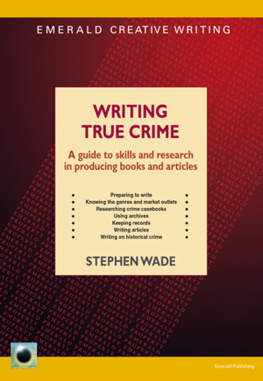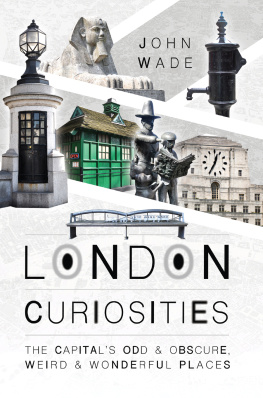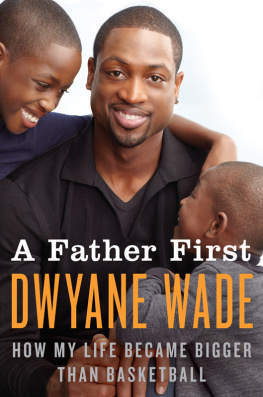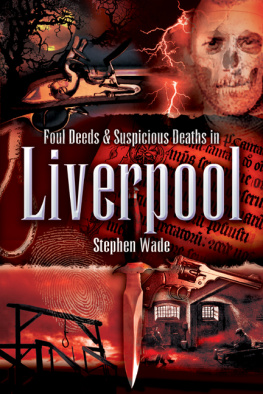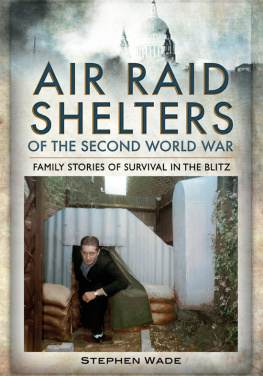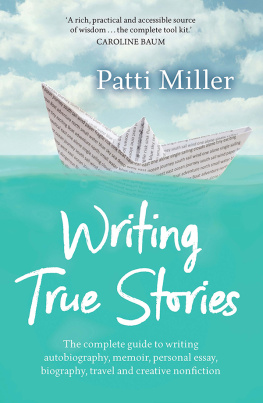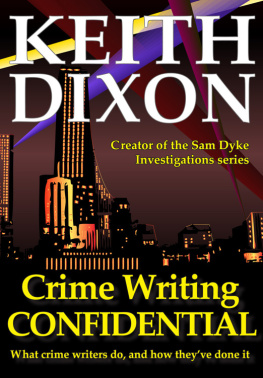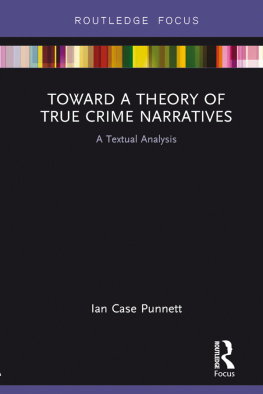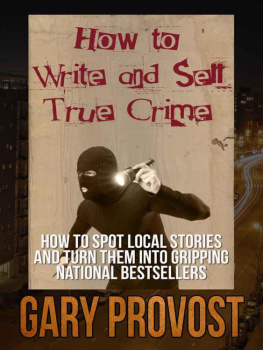WRITING TRUE CRIME
A guide to skills and research in producing books
and articles
Stephen Wade
www.emeraldpublishing.co.uk
Straightforward Guides
Stephen Wade 2009
All rights reserved. No part of this publication may be reproduced in a retrieval system or transmitted by any means, electronic or mechanical, photocopying or otherwise, without the prior permission of the copyright holders.
ISBN 9781847161260
eISBN 978-1-84716-510-7
Kindle ISBN 978-1-84716-511-4
Printed by GN Printing Essex
Cover design by Straightforward Graphics
Whilst every effort has been made to ensure that the information contained within this book is correct at the time of going to press, the author and publisher can take no responsibility for the errors or omissions contained within.
Contents
PREFACE
Publishers would generally agree that putting the word Murder on the cover of a book increases the chances of a sale. I wrote a book a few years ago about women killers in British history. As I researched it, I came across more and more sad cases of infanticide in the Regency and early Victorian years. To equate these killers with such murderers as Louie Calvert, boot fetishist and man-killer, seemed immoral. I didnt really want this to be a murder book but it was published as Yorkshires Murderous Women and I understand why.
The crimes of murder, rape and abduction, along with gangland antics and large-scale robberies, dictated the nature of the red and blacks on the true crime shelves for many years. But although they are still there, the spectrum has widened and there is more scope for the aspiring true crime writer now. The recent success of Kate Summerscales The Suspicions of Mr Whicher show how the trend is for more ambitious, strong narrative books with a depth of enquiry into social history at the heart of the tale.
THE RED-BACK TEMPLATE
To a general reader, true crime suggests books about the Krays, drug barons, bare-knuckle fighters with prison stories, and similar titles. But although the monthly magazines support that view in some ways, the first point to make is that any crime can be fascinating and multi-layered if the writer takes the research seriously. The market for the red backs is capable of being stretched because new crimes come along as society changes. The spree killer phenomenon for instance, is an example. The names Hungerford and Columbine have a cultural resonance because the stories of these atrocities permeated the popular press and reasons for explaining such killings were explained by psychologists. Why a young man would walk into a high street and slay strangers at random is something to preoccupy a criminal profiler, but there is also an imaginative dimension, where a writer can be empathic and write almost semi-fictionally.
A crime writer can break that fixed template of murder and gangland by taking a different angle on the subjects, asking new questions, or revisiting the established opinions.
GENRES BROKEN DOWN
We live in an age when literary genres are transmuting and intermixing. Andrew Motion wrote a book on Wainewright, the poisoner, a man who really existed and moved in literary circles in the nineteenth century and who did poison people. But Motion made part of his book fictional, creating a productive and interesting mix of genres.
In writing true crime or crime history, the scope is there for including information from all kinds of areas and specialisms, such as medicine, psychology, political history, sociology and biology. After all, we live in a time when a botanist may find a valuable and rewarding career as a forensic botanist, coming out of the lab to work on a crime scene.
In the last few years there have been best-selling books on the shelves dealing with the first women convicts sent to Australia, the search for a great-grandmother who was imprisoned for murder after simply slackening her vigilance as she bathed her babies, body-snatching in Regency London and the East European crime outfits flooding British sex and drugs trades.
THE WRITERS TOOLBOX
Just as detectives use the famous murder bag invented by Sir Bernard Spilsbury, the crime writer needs a toolbox. This is my essential list, after six years of working as a true crime writer: a personal reference library, access to digital archives, newspaper cuttings files and a network of experts at archives and in organisations. My latest book will illustrate this. I have just completed Cold Case Investigators (Pen and Sword) which is a collection of cases solved by DNA sampling. Writing this was so much easier with the backup of my shelf of reference works on forensics and the newspaper archives on my computer. In addition, I had to check all kinds of facts, from place-names to legal professionals and work with journalists or archivists. These people have become acquaintances I can e-mail and ask regarding small details.
The writing after all this is a matter of knitting together a mass of facts and opinion. When I first started, I had to spend hours gathering these resources, but that has been invaluable. Writing at the screen, I have most of these sources and supports within arms reach.
START WITH THE PEOPLE
Crimes happen for all kinds of reasons, and what was an offence in 1800 will not be one now. In 1950 suicide was still a criminal offence. Up to 1964 a person planning to take a life knew that one possible outcome of his act would be an appointment with the hangman. To help the true crime writer, there is an established classic structure in the historical crime subjects: in the case of the 220 capital crimes on the statute books in Britain up to the 1820s, the structure of the narrative the writer follows is:
The crime and its circumstances
The pursuit and the arrest
The trial in court or courts
The time in prison the possibility of a reprieve or a commutation.
The execution
That may still be the basis of a successful book or article, of course, but my advice is to start with the people, not the offence. The best crime writing comes from the understanding and retelling of the human situation at the core of the story. Take the example of a man who has embezzled funds from some organisation for which he acts as treasurer. He has betrayed trust as well as broken the law. Understanding that human dilemma is an integral part of writing that story. The moral consequences are as important and intriguing as the legal ones.
PUBLICATION
Today, the long-established monthly true crime magazines are a good place to start. True Crime, Murder Most Foul and True Detective constantly need stories of course, and they invite well-researched stories, profiles and theories on all varieties of crime. The work involved in this kind of writing is an excellent basis for book-length work. Some subjects never fade away of course: any new angle on major subjects such as Jack the Ripper, The Moors Murders or Dick Turpin will always find a positive response. But equally, the sidelights of crime have a place too.
The first step is to reflect on exactly what aspects of crime and law interest you most profoundly. Some writers have the scientific interest needed for scene of crime and forensics writing; others prefer the intuitive writing required for such topics as psychopaths, deviancy and violent crime. But the range is vast, and crime borders on any number of other disciplines. In the course of writing my books I have had to understand political radicalism, the effects of various drugs, how arsenic may be detected and how detectives were trained in 1930.
If the story you choose has more questions than may be easily answered, then there is potential there. My own first writing in true crime was, I can now see with hindsight, an attempt to tell the bare events and bring in some social history. As I learned more, I worked hard to create layers of meaning and interest. That has enriched the whole process and of course, my satisfaction in the end product.

